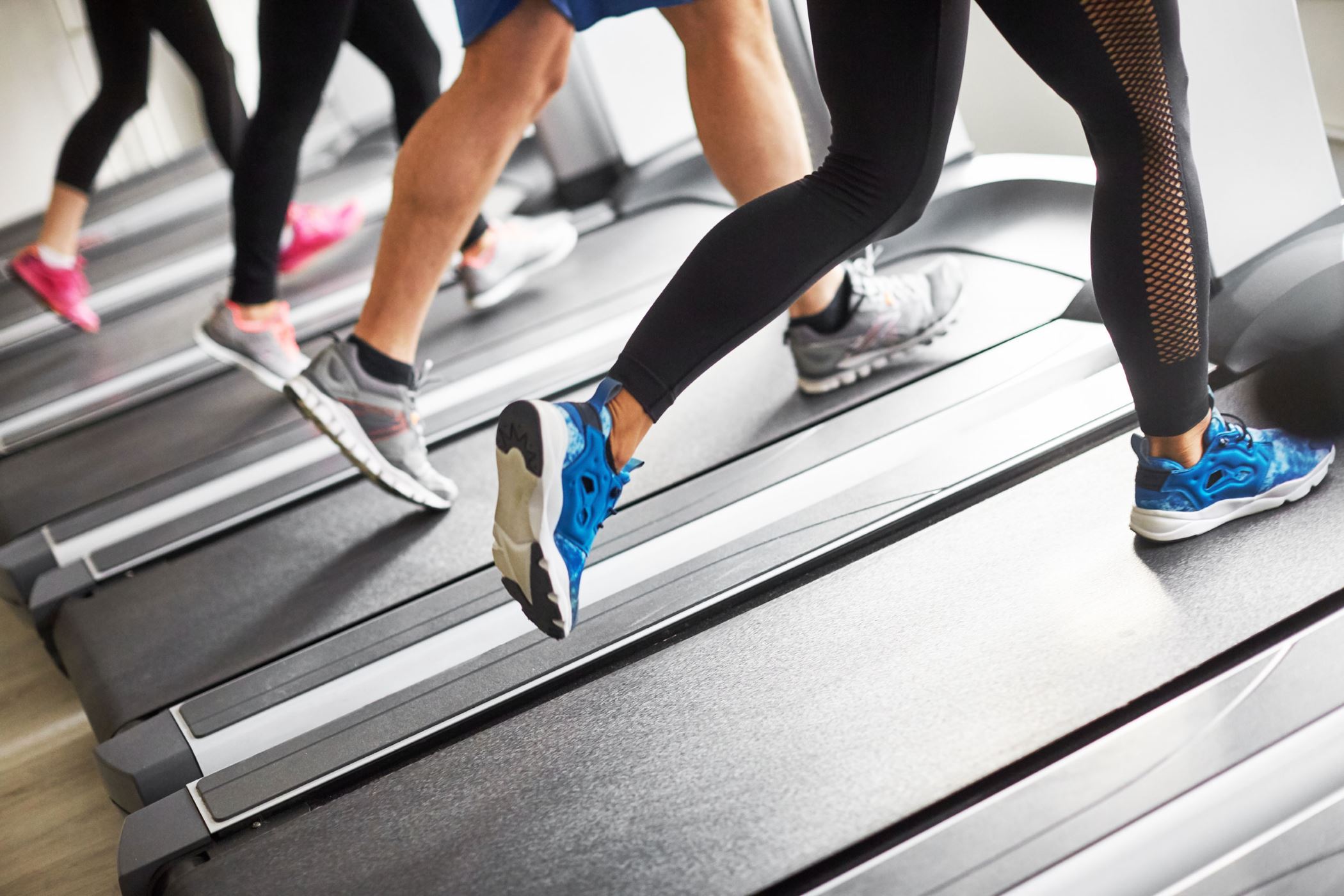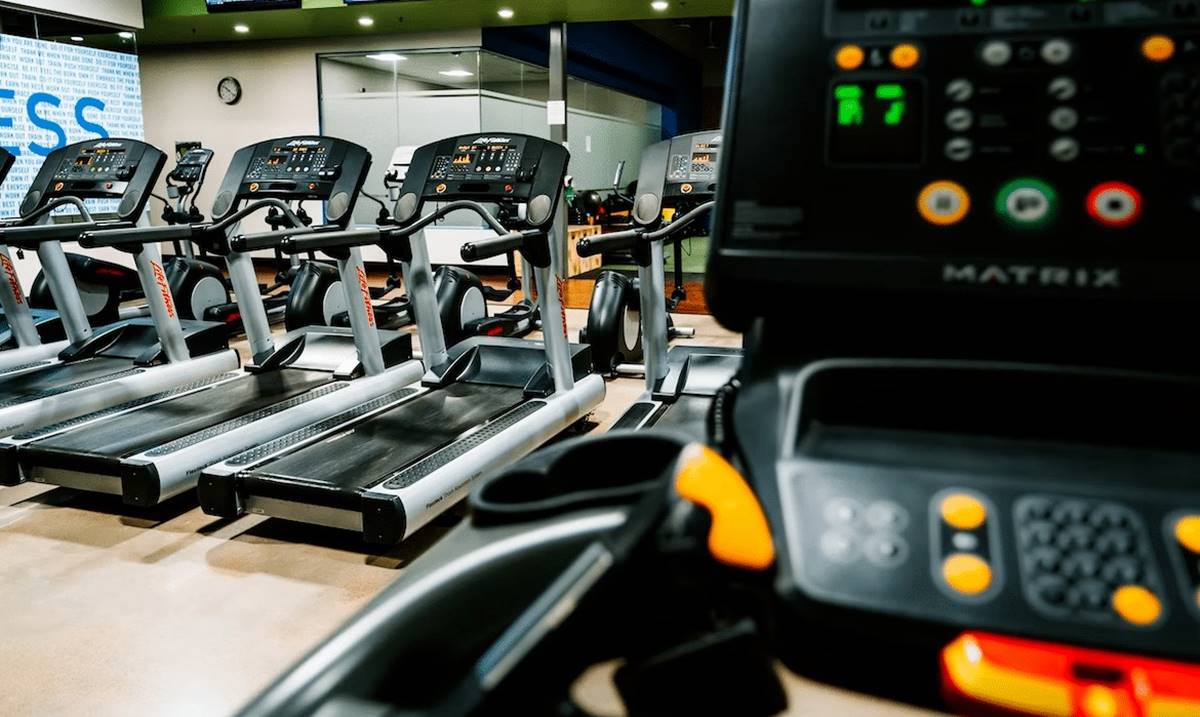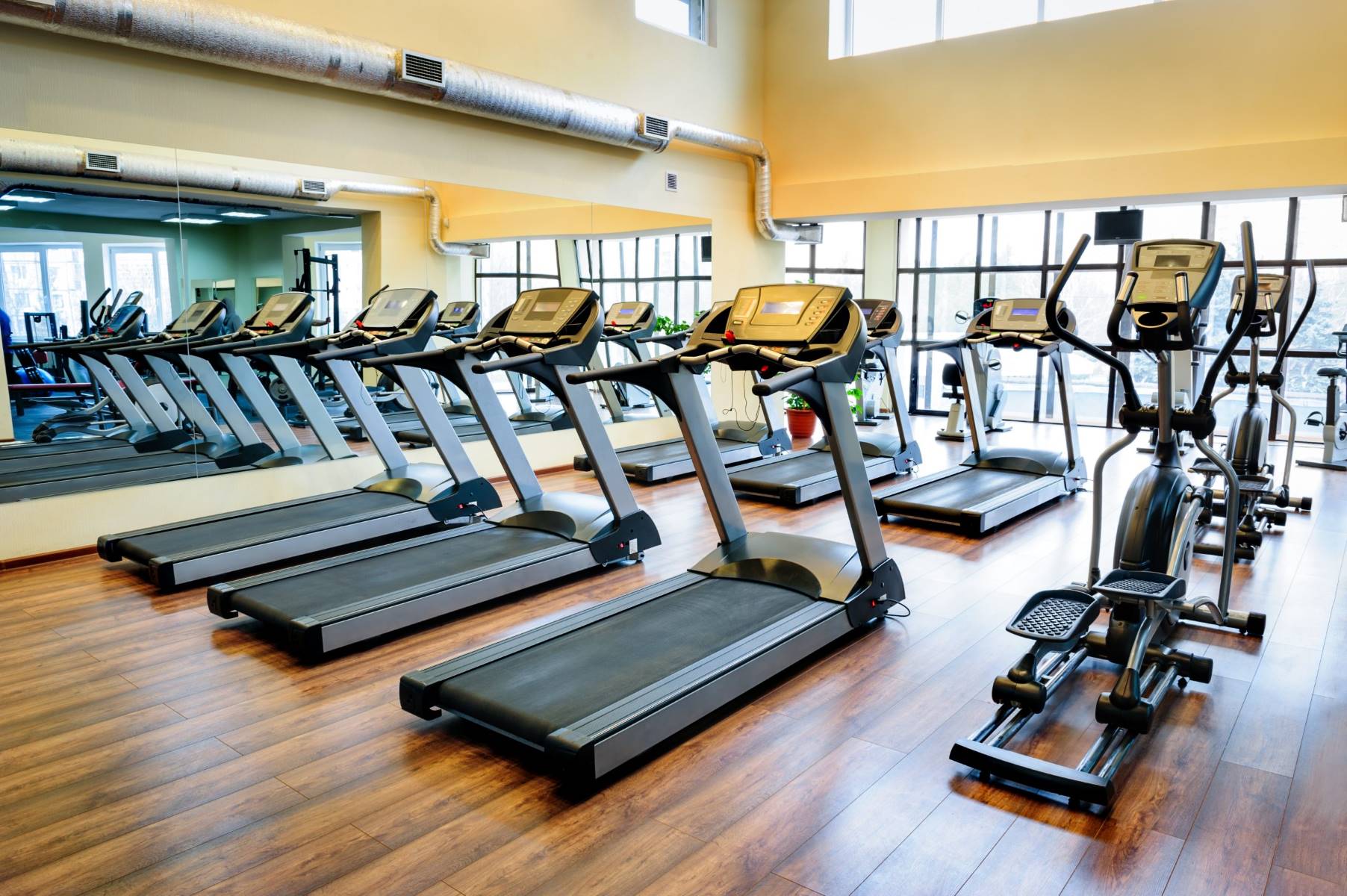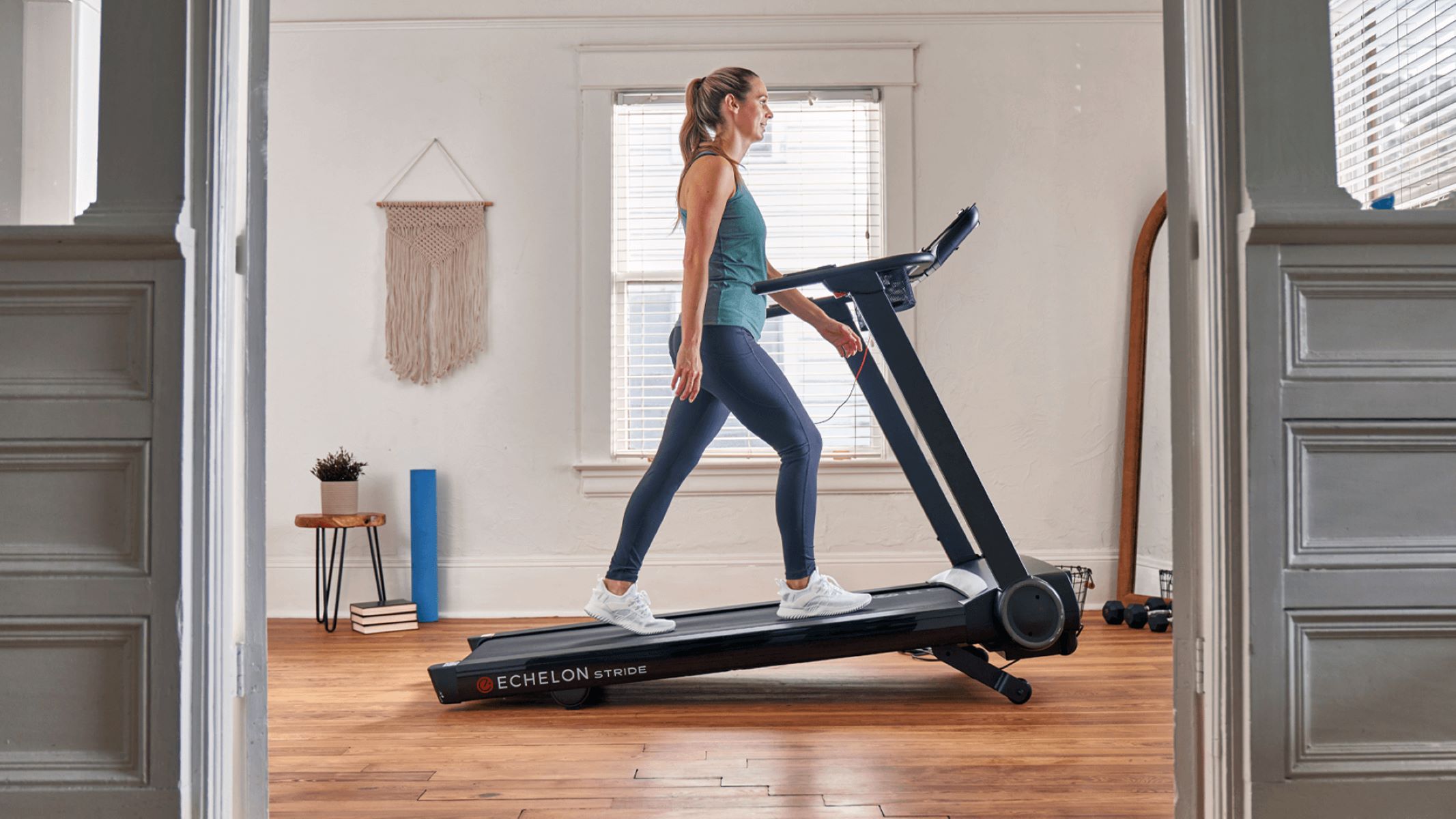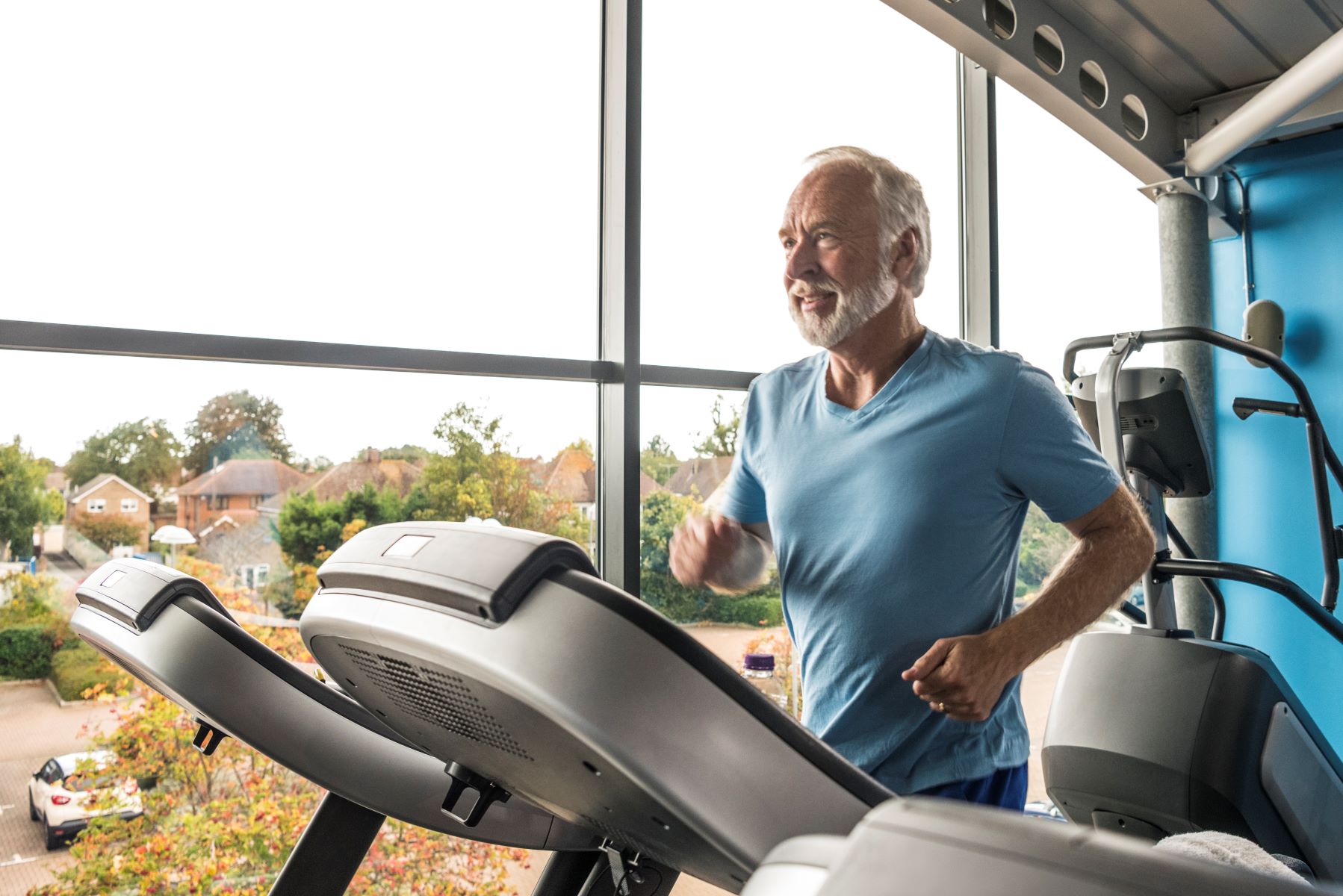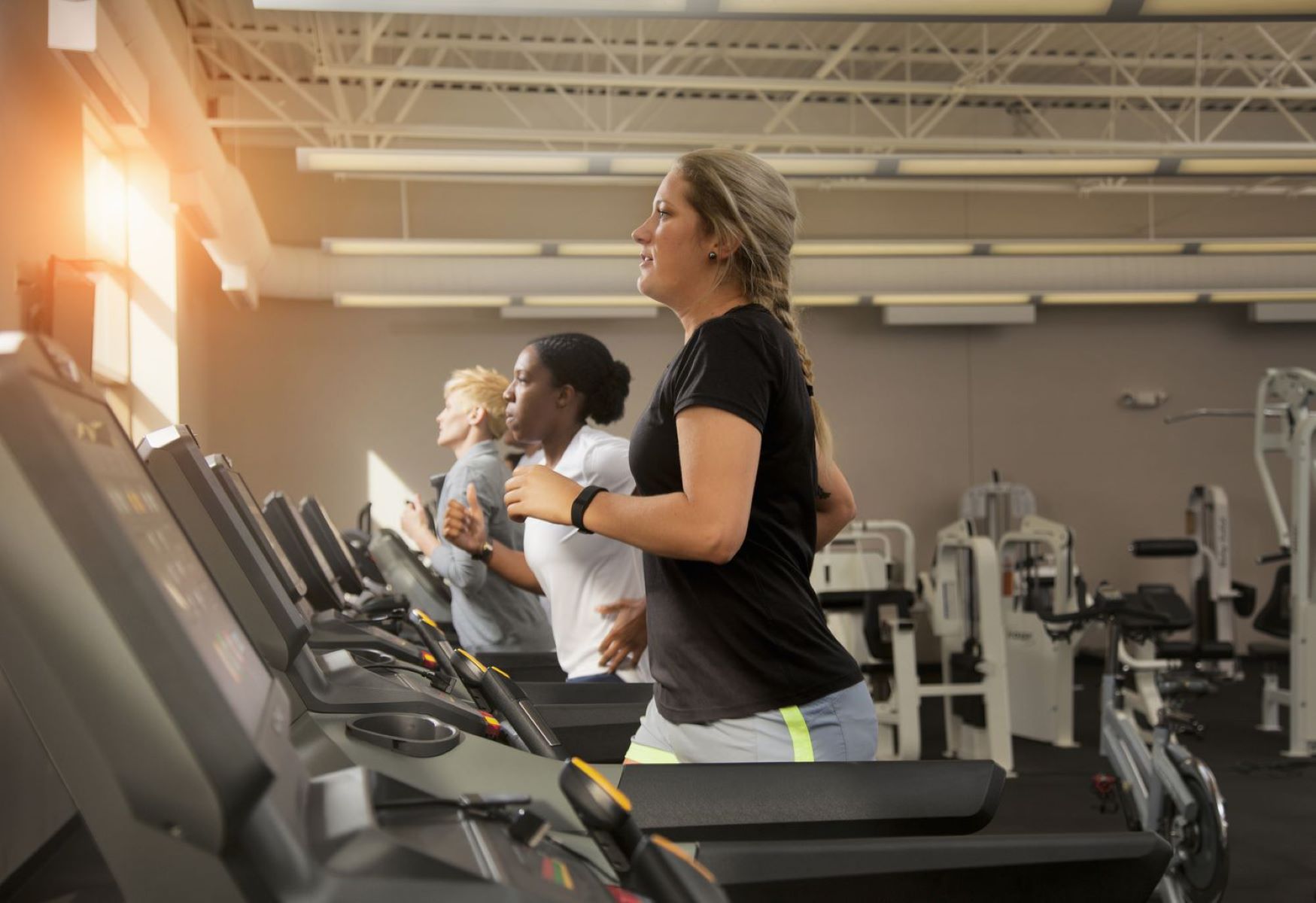

Featured
How Fast Is Speed 3 On A Treadmill
Modified: August 21, 2023
Discover the incredible speed of the featured treadmill model with Speed 3, guaranteed to elevate your running experience to new heights.
Introduction
Welcome to the world of treadmill running, where you can experience the exhilaration of high-speed workouts right in the comfort of your own home or gym. Whether you’re a beginner looking to kickstart your fitness journey or a seasoned athlete aiming to push your limits, finding the right treadmill speed is key to reaching your goals. In this article, we’ll take a closer look at Speed 3 on a treadmill, exploring its benefits, drawbacks, and how it fits into your overall fitness routine.
Speed 3 on a treadmill refers to a specific pace that can vary depending on the treadmill make and model. It is generally considered to be a moderate running speed, suitable for individuals looking to improve their cardiovascular fitness and endurance. This speed is often a popular choice among beginners who want to challenge themselves and experienced runners who want to maintain a steady pace during long-distance training.
Running at Speed 3 on a treadmill can provide a variety of benefits. It helps to elevate your heart rate, increase calorie burn, and improve cardiovascular strength. Additionally, running at this speed can help you build endurance and improve your aerobic capacity, which is crucial for activities that require sustained effort over a longer period of time.
However, it’s important to note that running at Speed 3 may not be suitable for everyone. Factors such as individual fitness level, injury history, and personal goals should be considered before incorporating this pace into your workouts. It’s always a good idea to consult with a healthcare professional or certified fitness trainer who can provide personalized guidance based on your specific needs and abilities.
In the following sections, we’ll delve deeper into the details of Speed 3 on a treadmill, exploring the factors that affect this speed, as well as the potential alternatives and safety precautions to keep in mind. So, let’s lace up our shoes and dive into the world of running at Speed 3 on a treadmill!
Overview of Treadmill Speeds
Before we delve into the specifics of Speed 3 on a treadmill, let’s take a moment to understand the range of speeds typically available on treadmills. Treadmills are designed to cater to a wide range of fitness levels and goals, offering a variety of speed settings to accommodate different workout intensities.
Most treadmills have a speed range starting from 0.5 mph (miles per hour) and can go up to 12 mph or even higher in some advanced models. The exact speed increments between levels may vary depending on the treadmill, but they often range from 0.1 mph to 0.5 mph.
At the lower end of the speed range, between 0.5 mph to 3 mph, you’ll find the walking speeds. These slower speeds are ideal for warm-ups, cool-downs, or for individuals who are just starting their fitness journey. Walking speeds are generally lower impact and provide a good opportunity to focus on form and technique.
Moving up the speed spectrum, between 3 mph to 6 mph, you’ll find the jogging speeds. Jogging is a step up from walking and offers a higher intensity workout, engaging more muscles and increasing calorie burn. Jogging speeds are commonly used for longer duration cardio workouts, endurance training, or as a transition from walking to running.
Next, we have the running speeds, typically ranging from 6 mph to 12 mph. Running at these speeds provides a challenging cardiovascular workout that increases speed, power, and endurance. These speeds are often used by more experienced runners or individuals training for races and competitions.
It’s important to note that these speed ranges are not set in stone and can vary between different treadmills. Some treadmills may have additional speed settings or offer more precise speed adjustments to cater to individual preferences. Always refer to the manufacturer’s guidelines and consult with a fitness professional to determine suitable speed settings for your specific fitness goals and abilities.
Now that we have a general understanding of treadmill speed ranges, let’s explore Speed 3 on a treadmill in more detail in the next section.
Understanding Speed 3 on a Treadmill
Speed 3 on a treadmill is a specific pace that falls within the jogging range and is commonly chosen by individuals looking for a moderate intensity workout. This speed is typically equivalent to running 3 miles per hour (mph), but it can vary slightly depending on the treadmill brand and model.
Running at Speed 3 on a treadmill offers numerous benefits for both beginners and more experienced runners. It provides a balance between challenging your cardiovascular system and allowing for greater control and form improvement. Running at this pace can help improve endurance, burn calories, and increase overall fitness levels.
For beginners, Speed 3 on a treadmill is often a stepping stone from walking to jogging. It allows individuals to gradually increase their cardiovascular fitness while minimizing the risk of injury. Running at this moderate pace gives beginners the opportunity to develop proper running mechanics and build a solid foundation before advancing to higher speeds.
For more experienced runners, Speed 3 can be an ideal pace for recovery runs or easy workouts. After intense training sessions or races, running at a slower pace can aid in muscle recovery and help prevent overuse injuries. It offers a lower-impact option while still providing cardiovascular benefits and promoting active recovery.
It’s important to listen to your body while running at Speed 3 on a treadmill. Pay attention to your breathing, heart rate, and overall comfort level. If you’re able to maintain a conversation while running, it’s a good indication that you’re at the right intensity for a moderate workout.
However, it’s essential to remember that individual fitness levels and goals can influence the appropriateness of running at Speed 3. What may be a comfortable pace for one person may feel challenging or too easy for another. Always personalize your workouts based on your current fitness level and consult with a fitness professional for guidance.
In the next section, we will explore the factors that can affect the experience of running at Speed 3 on a treadmill, so stay tuned!
Factors Affecting the Speed 3 on a Treadmill
Running at Speed 3 on a treadmill can be influenced by a variety of factors that can affect your experience and performance. It’s important to take these factors into consideration to optimize your workout and ensure a safe and enjoyable running experience. Let’s explore the key factors that can affect Speed 3 on a treadmill:
- Fitness Level: Your current fitness level plays a significant role in determining how comfortable or challenging running at Speed 3 will be for you. If you’re a beginner or just getting back into running, this pace may feel more intense. As your fitness improves, you may find Speed 3 becoming easier to sustain.
- Treadmill Type and Quality: The quality and features of the treadmill you’re using can affect your experience at Speed 3. Different treadmills may have variations in the accuracy of their speed settings. It’s advisable to use a reliable, well-maintained treadmill that provides consistent and accurate speed readings.
- Incline: Running at Speed 3 with an incline can increase the intensity of your workout. The incline simulates running uphill, engaging more muscles and adding a higher level of cardiovascular challenge. Adjusting the incline can help you tailor your treadmill workout to your specific fitness goals.
- Running Form: Your running form has a significant impact on how efficiently you can run at Speed 3. Proper posture, stride length, and foot strike can help you maintain a consistent and smooth pace. Focus on keeping your core engaged, shoulders relaxed, and maintaining a midfoot strike to optimize your running technique.
- External Environment: The external environment, such as temperature, humidity, and air circulation, can impact your running experience at Speed 3 on a treadmill. Keep in mind that running indoors may offer more controlled conditions compared to outdoor running, where factors like weather and terrain can influence your body’s response to running at this pace.
Remember, these factors can vary from person to person, so it’s essential to listen to your body and make adjustments accordingly. Start at a pace that feels comfortable for you and gradually increase your speed as your fitness improves. Pay attention to any discomfort or pain and make necessary adjustments to ensure a safe and enjoyable running experience at Speed 3 on a treadmill.
In the next section, we will discuss the benefits and drawbacks of running at Speed 3, so keep reading!
Benefits and Drawbacks of Speed 3 on a Treadmill
Running at Speed 3 on a treadmill offers a range of benefits for both physical fitness and overall well-being. However, like any other exercise, there are also potential drawbacks to consider. Understanding these benefits and drawbacks can help you make informed decisions about incorporating Speed 3 into your treadmill workouts. Let’s explore them below:
- Benefits:
- Cardiovascular Fitness: Running at Speed 3 provides a moderate-intensity cardiovascular workout, helping to improve heart and lung health. This pace elevates heart rate and challenges your cardiovascular system, leading to improved endurance over time.
- Calorie Burn: Running at this pace can contribute to calorie burn and weight management. The exact number of calories burned will vary based on factors such as individual weight, gender, and intensity. However, running at Speed 3 can be an effective way to support weight loss or maintenance goals.
- Endurance Building: Regularly running at Speed 3 can enhance your endurance and stamina, allowing you to run for longer durations or increase your overall running distance. This improvement in endurance can benefit not only your running performance but also other physical activities and daily life.
- Low Impact: Speed 3 on a treadmill offers a relatively low-impact workout compared to higher speeds. This can be beneficial for individuals who want to minimize the stress on their joints, especially those recovering from injuries or with existing joint issues.
- Variety in Workout Intensity: Incorporating Speed 3 into your treadmill workouts adds variety and allows you to alternate between higher and lower-intensity sessions. This can prevent boredom, keep you motivated, and challenge your body in different ways.
- Drawbacks:
- Intensity Limitations: While Speed 3 offers numerous benefits, it may not provide enough intensity for some individuals who are seeking a more challenging workout. If you’re an experienced runner or have specific fitness goals, you may need to incorporate higher speeds or other forms of training to continue progressing.
- Limited Muscle Engagement: Running at lower speeds like Speed 3 primarily targets the lower body muscles, such as the quadriceps, hamstrings, and calves. To ensure overall muscle balance and development, it’s important to incorporate strength training exercises that target the upper body and core.
- Reduced Muscular Power: Speed 3 may not fully engage the fast-twitch muscle fibers responsible for explosive movements and generating power. If you’re focusing on improving speed, agility, or explosive strength, incorporating higher-intensity sprints or interval training may be more beneficial.
Keep in mind that the benefits and drawbacks can vary depending on individual fitness levels, goals, and preferences. It’s crucial to personalize your workouts and consider these factors when determining the suitability of Speed 3 on a treadmill for your specific needs.
In the next section, we will discuss safety precautions to keep in mind while running at Speed 3 on a treadmill, so stay tuned!
Safety Precautions for Running at Speed 3 on a Treadmill
While running at Speed 3 on a treadmill can be an effective way to improve cardiovascular fitness, it’s important to prioritize safety to prevent injuries and ensure a positive exercise experience. Here are some key safety precautions to keep in mind:
- Warm-up: Before starting your run at Speed 3, it’s essential to warm up your muscles and prepare your body for the workout. Perform dynamic stretches or light cardiovascular exercises to increase blood flow and flexibility, reducing the risk of strains or pulls.
- Proper Footwear: Wearing proper running shoes with adequate cushioning and support is crucial for running at any speed. Invest in a pair of shoes that fit well and are designed for running to minimize the risk of foot and ankle injuries.
- Watch Your Surroundings: While running on a treadmill, it’s important to maintain awareness of your surroundings. Avoid distractions and ensure you have plenty of space in front of and around the treadmill to avoid tripping or colliding with objects.
- Use Handrails Responsibly: Although most treadmills have handrails for stability, it is recommended to avoid relying on them excessively. Using the handrails excessively or improperly can alter your natural running mechanics and increase the risk of accidents or injuries. Use the handrails for support only when necessary, such as when adjusting speed or recovering balance.
- Hydration: Staying properly hydrated is crucial during any exercise session, including running at Speed 3 on a treadmill. Keep a water bottle nearby and take regular sips to maintain hydration levels throughout your workout.
- Listen to Your Body: It’s essential to listen to your body and pay attention to any warning signs or discomfort while running. If you experience sharp pain, dizziness, or shortness of breath, stop your workout and seek medical attention if necessary. Pushing through pain or discomfort can lead to further injury.
- Cool Down and Stretch: After completing your run at Speed 3, it’s important to cool down properly. Gradually reduce your speed and finish with a few minutes of walking or light jogging to allow your heart rate and breathing to return to normal. Follow this with static stretching to improve flexibility and decrease muscle tightness.
- Gradual Progression: If you’re new to running or increasing your speed, it’s essential to progress gradually. Start with shorter running intervals at Speed 3 and gradually increase your workout duration and intensity over time. This helps your body adapt to the demands of running and reduces the risk of overuse injuries.
Remember, safety should always be a top priority when engaging in any form of exercise. By following these safety precautions, you can reduce the risk of injuries and ensure a positive and rewarding running experience at Speed 3 on a treadmill.
In the next section, we’ll explore alternative options to running at Speed 3 on a treadmill, so keep reading!
Alternatives to Speed 3 on a Treadmill
While running at Speed 3 on a treadmill can be an effective way to improve fitness and endurance, it’s important to incorporate variety into your workouts to challenge your body in different ways and prevent exercise plateaus. Here are some alternatives to consider:
- Interval Training: Incorporate interval training into your treadmill workouts. This involves alternating between periods of high-intensity running or sprinting and periods of active recovery or lower-intensity jogging. Interval training can help improve speed, endurance, and overall cardiovascular fitness.
- Hill Training: Increase the incline on your treadmill to simulate running uphill. This engages more muscles and boosts the intensity of your workout. Hill training helps improve leg strength, stride power, and cardiovascular fitness. Start with shorter hill intervals and gradually increase the duration and intensity.
- HIIT Workouts: High-Intensity Interval Training (HIIT) involves short bursts of intense exercise followed by short recovery periods. Incorporate HIIT workouts into your treadmill routine by alternating between all-out sprints and brief periods of active recovery. HIIT can maximize calorie burn, improve cardiovascular fitness, and increase metabolic rate.
- Outdoor Running: Take your running workouts outdoors to experience different terrains and natural surroundings. Outdoor running provides variation in inclines, surfaces, and challenges your balance and coordination. It also adds a refreshing change of scenery, making your workouts more enjoyable.
- Cross-Training: Include other forms of exercise, such as cycling, swimming, or strength training, alongside your treadmill workouts. Cross-training helps improve overall fitness by engaging different muscle groups and preventing overuse injuries. It also adds variety to your routine and keeps you motivated.
- Virtual Workouts: Make use of virtual workout platforms or fitness apps that offer a wide range of guided workouts. These platforms often provide running and cardio classes with varying intensities, inclines, and durations. Following along with a virtual instructor can add motivation and keep your workouts interesting.
Remember, the key is to find a combination of exercises that works best for you and aligns with your goals and preferences. By incorporating these alternatives into your treadmill routine, you can challenge your body in different ways, prevent boredom, and continue making progress towards your fitness goals.
In the final section, we’ll wrap up our discussion on running at Speed 3 on a treadmill. Keep reading for a brief recap of the key points!
Conclusion
Running at Speed 3 on a treadmill can be a valuable addition to your fitness routine, offering a moderate-intensity workout that improves cardiovascular fitness, burns calories, and builds endurance. Whether you’re a beginner or an experienced runner, incorporating this pace into your workouts can help you achieve your fitness goals.
However, it’s essential to consider individual factors such as fitness level, goals, and safety precautions. Always listen to your body, warm up properly, wear appropriate footwear, and be mindful of your surroundings when running at Speed 3. Gradual progression and incorporating variety through interval training, hill workouts, or outdoor running can keep your routine fresh and challenging.
Remember, running at Speed 3 is just one option among many. Exploring alternatives like HIIT workouts, cross-training, and outdoor running can provide additional benefits and prevent exercise plateaus.
Lastly, consult with a healthcare professional or fitness trainer to assess your specific needs and abilities. They can provide personalized guidance and help you tailor your workouts to achieve optimal results.
So, whether you’re aiming to increase endurance, shed some pounds, or simply improve cardiovascular health, don’t be afraid to lace up your running shoes and embrace the world of Speed 3 on a treadmill. Enjoy the journey as you challenge yourself, push your limits, and achieve your fitness goals! Happy running!
